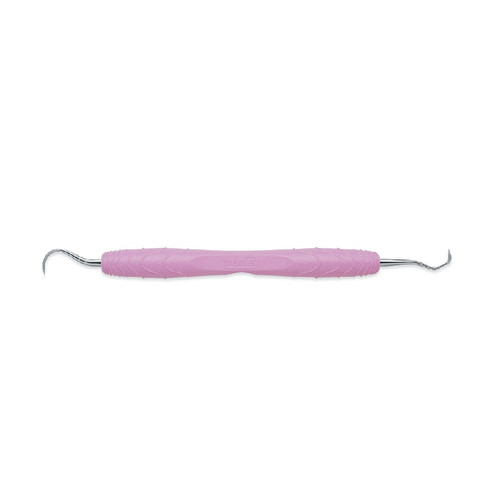- universal sickle scaler for removing calculus and stains from all tooth surfaces, with a design that is particularly effective for posterior teeth
Applications:
- Universal scaling:
- This instrument can be used for the effective removal of supra- and subgingival calculus deposits from all tooth surfaces
- Root planing:
- The fine, sharp tips are suitable for smoothing the tooth root surface, a procedure known as root planing
- Posterior scaling:
- The tip design is optimized for scaling the posterior teeth and navigating tight interproximal spaces in that area
- Heavy calculus removal:
- The blade design is effective for removing moderate to heavy calculus deposits
Features:
-
204S Tip design:
- Double-ended:
- The instrument has two working ends that are mirror images of each other
- This allows the clinician to use the same instrument to access different surfaces, mesial and distal. of posterior teeth without needing to switch
- Short, angled shank:
- The 204S design features a shorter, more angled shank than a standard straight scaler
- This makes it particularly effective for reaching and adapting to the complex surfaces of posterior teeth and navigating tight interproximal spaces
- Sickle blade:
- The blade has a triangular cross-section with two cutting edges that converge to a pointed tip
- This design is highly effective for removing moderate to heavy calculus deposits
- Versatility:
- While optimized for posterior teeth, the design is also suitable for use on anterior teeth, making it a versatile tool for universal scaling
- SmartSharp technology:
- The tips are made from heat-treated, cryo-hardened 440A stainless steel
- This technology ensures the tips maintain a sharp edge and precise angle for greater efficiency and less repetitive motion for the user
- Autoclavable:
- The durable polymer handle is designed to withstand multiple autoclaving cycles, ensuring longevity and proper infection control
- Designed for control:
- The handle and tip design allow the user to easily maintain control during instrumentation with less pressure required







